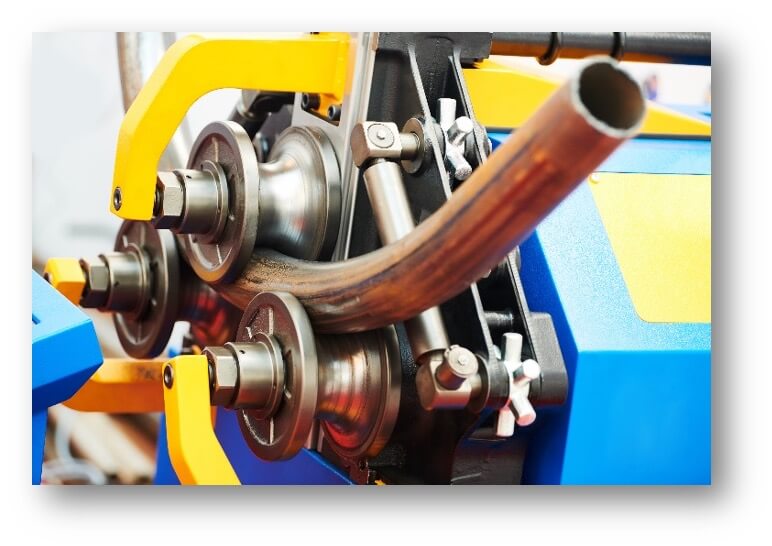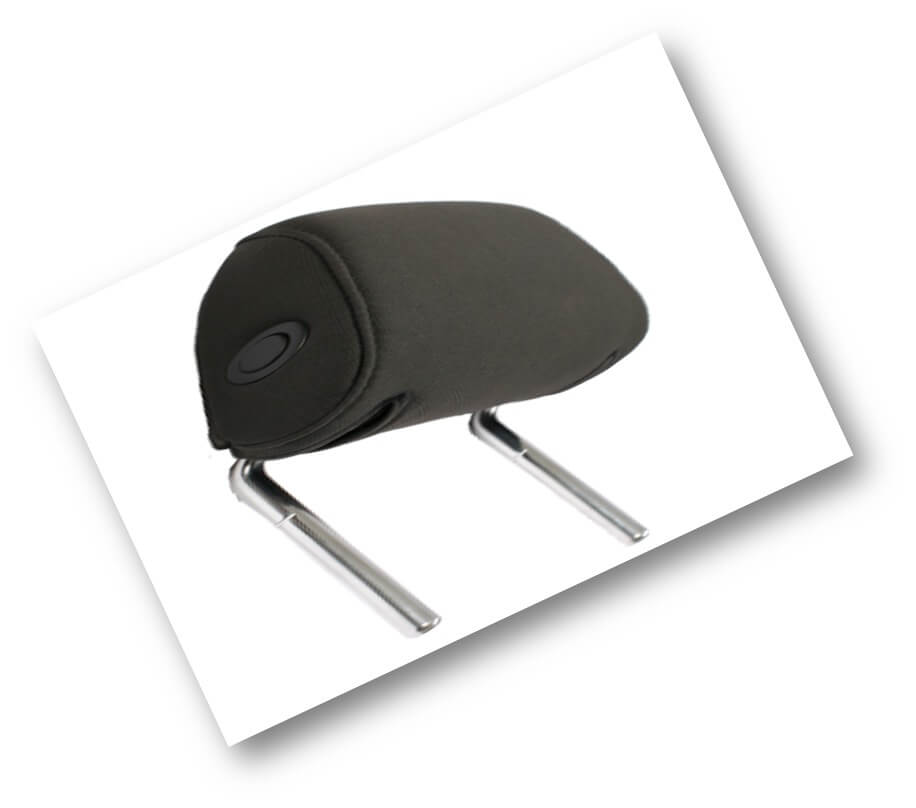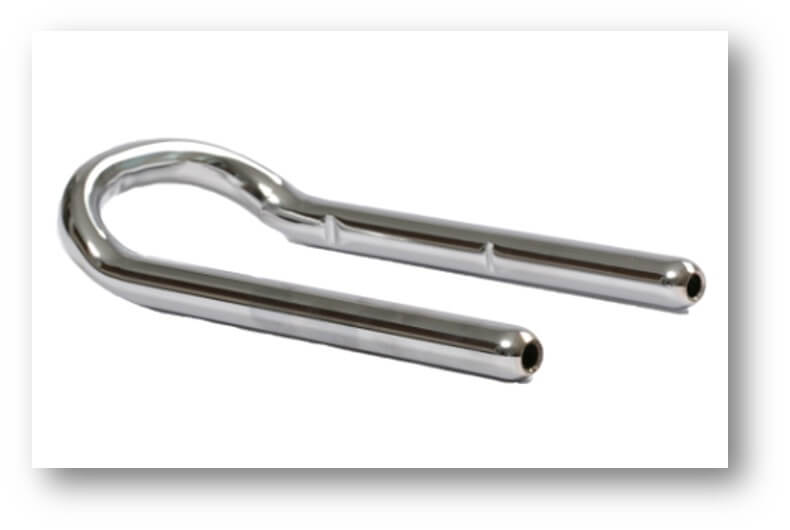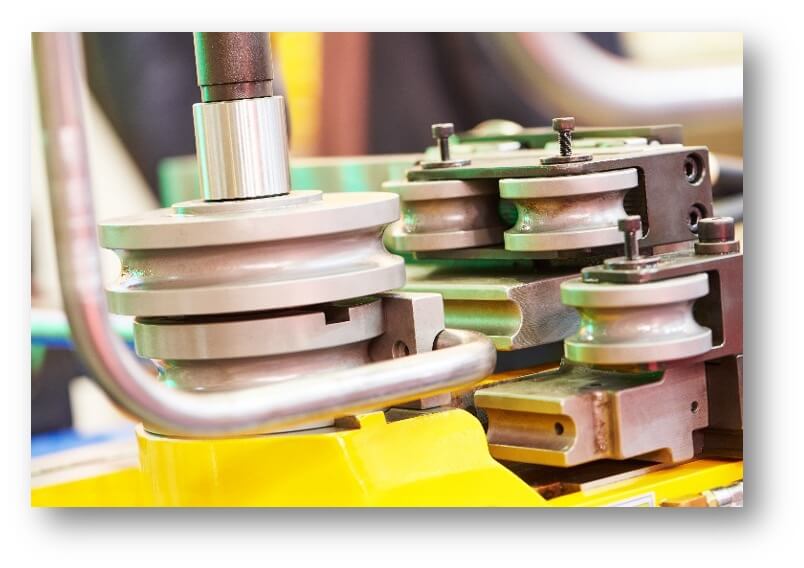Making the case: Why convert a tube-bending machine from hydraulic to electric
By Tolomatic on July 28, 2020
 Tube-bending machines make parts for objects we take for granted every day. The head-rest in your car, for example. Or the heat-exchange pipes in your air conditioner. Whether they are bending mild steel, stainless steel, copper or aluminum, these machines bend miles and miles of tubing at infinite angles. Operators know how to get the best out of their machines to crank out parts that are used as a component in another piece of equipment. Tube-bending machines historically have been driven by hydraulics, and it’s been that way for the past 80 years. Sure, there’s some waste, but for decades that extra cost of waste has been buried in the sales price. Hydraulic-driven machines are still the best way that manufacturers know to bend metal tubes.
Tube-bending machines make parts for objects we take for granted every day. The head-rest in your car, for example. Or the heat-exchange pipes in your air conditioner. Whether they are bending mild steel, stainless steel, copper or aluminum, these machines bend miles and miles of tubing at infinite angles. Operators know how to get the best out of their machines to crank out parts that are used as a component in another piece of equipment. Tube-bending machines historically have been driven by hydraulics, and it’s been that way for the past 80 years. Sure, there’s some waste, but for decades that extra cost of waste has been buried in the sales price. Hydraulic-driven machines are still the best way that manufacturers know to bend metal tubes.
But what if there’s a better way? One that produces better parts?
Machine builders are discovering that electric linear actuators can have significant advantages over hydraulic systems. Electric actuators are now used in a variety of industries traditionally covered by hydraulics, from sawmills to metal fabrication. When it comes to using electric cylinders to bend tubes, you have probably heard some of the arguments against. For starters, electric actuators take up more space for an equivalent force. A hydraulic cylinder is more compact, because the power source is isolated away from where the force is developed. With an electric cylinder, the motor has to be attached locally with the cylinder; it will occupy more space where the work is being done. Plus, electric cylinders have traditionally been more expensive than hydraulics. And, electric cylinders are a new technology and that means more training; time and expense.
Hmm. Electric actuators take up more space, they cost more and we don’t know how to use them. Why bother?
Here are a few reasons to choose electric actuators over hydraulics:
- Zero maintenance—You don’t have to change hydraulic fluid and don’t have to grease electric cylinders.
- Longer life—Electric cylinders can run for 10-20 million cycles without fail.
- Less expensive (no kidding!)—A simple bender, running one or two cylinders, can actually be less expensive than hydraulics for the capital cost and, as always, much less expensive to operate.
- No more hydraulic fluid—Hydraulic fluid can be messy if it leaks as well as dangerous. It’s slippery and cleanup requires additional time and expense.
- Mechanically efficient—Electro-mechanical systems are up to 85 percent efficient compared to a normal 30 percent for hydraulics
- Less electricity—Utilities are limiting power consumption for large manufacturing companies, so it’s important to become electrically efficient to save operating costs.
- Less noise—electricity is quieter
- Less installation time—An electric system requires 10 percent of the installation time compared to hydraulics. You simply bolt up the actuator and plug in a program. No need to bend hydraulic tubes, connect hoses or fittings.
Even with all these advantages, engineers still face machine-design challenges. Change is a big deal. There’s new testing to be done, plus every drawing, parts manual and work instruction to revise. You’ll need to stock spares parts for the old machines and new stuff for the new design during the transition. You’ll have to re-train operators, and they won’t like change either, because it is something new to learn initially.
But there is a fundamental reason to consider changing to an electro-mechanical system. You can make better parts with electric actuators than you can with hydraulics.
By “better,” we mean less waste and tighter tolerances. And we do that through force feedback, which tells us how hard the actuator is pushing and then coordinating the move with force and position.
This applies whether your machine makes tubes that are used as structural members (such as vehicle roll cages, chassis frames, head rests, ornamental iron work, awning frames, fence gates, furniture and more) or tubes used for fluid transfer (heat exchangers for air-conditioning or industries such as petrochemical, automotive, medical).
Here’s how it works for a manufacturer who makes head-rest tubing.
 Head rests use the lowest quality, least expensive steel tube, called electric-weld tubing. This type of tubing starts flat and is rolled to the required thickness. Wall thickness and seam location tolerances for this type of steel are very loose. A major parts quality issue is the tube’s spring-back; after a tube is bent, the piece bounces back a little. The tube thickness and seam location determine how much spring-back occurs. Auto makers set a tolerance for spring-back, and bent tubes that are not in the tolerance range are thrown away—they can’t be re-bent. The tube’s wall thickness and seam location determine how much spring-back occurs, and locating that seam along with compensating for thickness variations are challenging.
Head rests use the lowest quality, least expensive steel tube, called electric-weld tubing. This type of tubing starts flat and is rolled to the required thickness. Wall thickness and seam location tolerances for this type of steel are very loose. A major parts quality issue is the tube’s spring-back; after a tube is bent, the piece bounces back a little. The tube thickness and seam location determine how much spring-back occurs. Auto makers set a tolerance for spring-back, and bent tubes that are not in the tolerance range are thrown away—they can’t be re-bent. The tube’s wall thickness and seam location determine how much spring-back occurs, and locating that seam along with compensating for thickness variations are challenging.
 An electric system will allow tighter tolerances—and less waste—because force feedback allows the machine to adjust the actuator stroke for each bend. Testing identifies various combinations of seam location and how much force is required to bend the tube to a certain position.
An electric system will allow tighter tolerances—and less waste—because force feedback allows the machine to adjust the actuator stroke for each bend. Testing identifies various combinations of seam location and how much force is required to bend the tube to a certain position.
Force feedback, used to compensate for tolerances in wall thickness and the welded seam location, can help a machine designer reduce scrap by 80 percent.
Here’s how to make better parts with aluminum tubing used for air-conditioning heat-exchange pipes.
In this case, the tubes carry fluid under pressure, so consistent wall thickness is critical. Aluminum is very soft, and extrudes in the dye. As a result, two coordinated axes of motion are required to maintain wall thickness and to manage spring-back: one actuator pushes and one bends. “Gearing” the two axes together allows for variances in the tube and produces better parts.
These are just two ways that you can make better parts, whether you are using electric-weld steel tubing or copper or aluminum.

Need more info or want to start a discussion?
- Contact a Tolomatic engineer.
- And review our resources for hydraulic replacement

 Ask an Engineer
Ask an Engineer